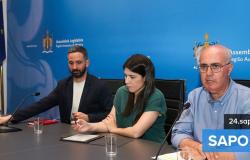The first quarter brought a bitter taste for those who bet on the appreciation of the real. After closing 2023 with a drop of 8.08%, at around R$4.85, the dollar ended the first three months of 2024 with gains of 3.34% and above R$5.00. One wing of the market sees room for a recovery in the Brazilian currency in the coming months, but the possibility of a dollar at around R$4.70 or much less around R$4.50, as was once considered, is not visible. at the end of last year.
Despite local political noise, the main driver of the dollar’s rise was the change in expectations surrounding American monetary policy. And it is precisely the bets for both the first interest rate cut by the Federal Reserve and the total monetary relief in the USA this year that will have a preponderant role in the behavior of the real.
Armor Capital’s chief economist, Andrea Damico, recalls that in December there was an expectation that the American Central Bank would start cutting interest rates in March, with a total reduction of around 150 basis points throughout 2024. Activity indicators and Higher-than-expected inflation in the US, combined with more conservative statements from Fed officials, led investors to predict an initial cut in June and a total reduction of 75 basis points.
Masterclass
The Most Promising Stocks on the Stock Exchange
Download a list of 10 Small Caps stocks that, in experts’ opinion, have appreciation potential in the coming months and years, and watch a free class
“The expectation was high that the real would appreciate in the first quarter, seasonally more favorable for the currency. In addition to the Fed being able to cut in March, the market was counting on a stronger flow”, says Damico, highlighting that, despite the significant trade balance, the real suffered from the global rise in the dollar and outflows from the capital account.
In fact, the DXY index – a thermometer of the American currency’s performance in relation to six strong currencies – ended the first quarter with an appreciation of around 3%. The dollar also advanced compared to most emerging currencies, with rare exceptions, such as the Mexican peso.
“The American economy is showing good growth and has an attractive interest rate, which leads to more resources going there. It is a story of a strong dollar in the world, and not a weaker real, despite domestic risks”, says the chief economist at Western Asset, Adauto Lima. “The real should recover as soon as there is more certainty about the trajectory of American interest rates, with the exchange rate falling to close to R$4.80.”
Continues after advertising
Dollar appreciation
The impact of the global strengthening of the dollar could have been mitigated by facts capable of attracting resources to the country. That was not what happened. The Lula government’s attempt to place names in the leadership of Vale and the withholding of extraordinary dividends from Petrobras have raised fears of government interference in publicly traded companies. There was also fear of a populist turn in Planalto after the president’s decline in popularity, with the eventual dehydration of the Minister of Finance, Fernando Haddad, the main guarantor of the commitment to fiscal responsibility.
Data from B3 show that foreign investors withdrew R$23.574 billion from the Brazilian stock exchange this year (until March 26). According to the Central Bank, there were net outflows of US$6.362 billion through the financial channel until March 22. The total flow in the period was still positive at US$5.335 billion thanks to the net inflow of US$11.697 billion via foreign trade.
“Seasonality indicates a first quarter of positive flow for the stock market, but there was an outflow of resources. And this hindered the performance of the real thing”, says Damico, from Armor. “Although the perception is that Haddad is still strong, the government’s messaging has worsened.”
Damico does not see a relevant change in the exchange rate in the short term, but believes in the possibility of the real recovering throughout the second half of the year with the weakening of the DXY, ending 2024 between R$4.80 and R$4.90. This depends, above all, on a slowdown in activity and inflation indicators in the United States that gives enough confidence for the Fed to start reducing interest rates in June.
For the chief economist at Banco BV, Roberto Padovani, the best moment for the real has passed and, at its current price, the Brazilian currency is already overvalued. In a model that considers the three main variables for forming the exchange rate – interest differential, commodity price and risk perception – the dollar should be at R$5.30.
“I don’t think the dollar will go to R$5.30. The model says more about the trend than the level. But the fundamentals suggest an upward trend in the dollar in Brazil”, says Padovani, adding that, even with all the optimism of last year, the dollar remained at around R$4.70 for a short time.
The economist emphasizes that historically the interest differential is the most relevant variable for the level of the exchange rate – and that the combination of movements by the Fed and the Central Bank will not, contrary to what the market expects, be favorable to the real from now on. front.
Padovani states that the BC was late in the process of reducing interest rates and sees room for the base rate to fall to 9% this year, while the domestic interest curve includes a Selic perspective of around 9.75%. The Fed should be very conservative, opting for a 0.25 point cut in June, followed by two more reductions of the same magnitude this year. “Interest rates should continue to fall here, while they started to fall at a slower pace there, which points to a more pressured dollar,” he says.
Tags: Appreciation real depend decisions American Central Bank interest rates
--





